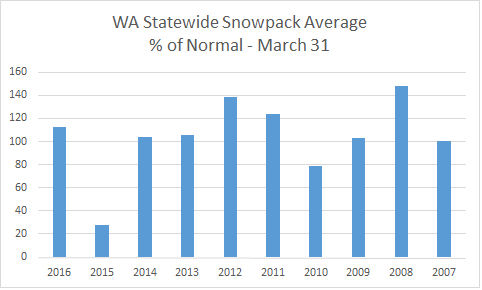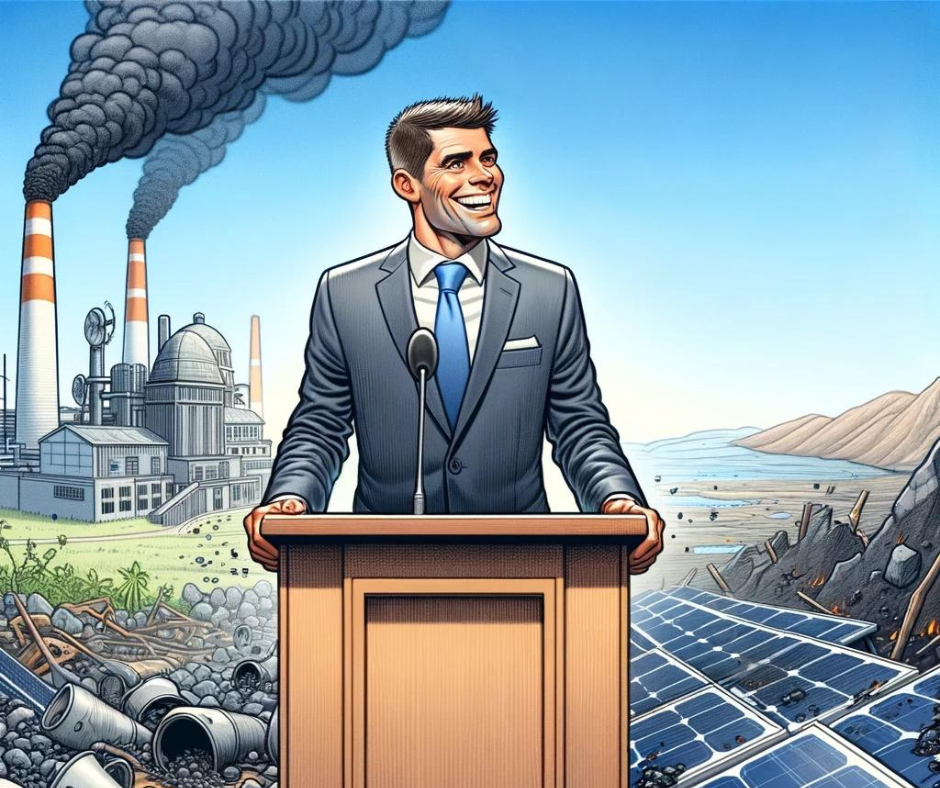High Snowpack Year: Apparently Nature Is Rightside Up Again
After a very low snowpack year during the winter of 2014-15, we were told it could become the “new normal,” and that is was evidence climate change was already here. It was claimed the combination of climate change and El Nino would mean another low snowpack winter during 2015-16.
One of the most outspoken was Ecology Director Maia Bellon. In an interview with The Seattle Times last September, predicting a warm, dry winter, Bellon said “nature seems upside down.” As late as November, Bellon said that extremely low snowpack “could be the new normal.”
Now that Spring is here, we can assess how those predictions turned out.
As of March 31, the Natural Resources Conservation Service reports that snowpack was at 112 percent of normal. Every snow shed was above 93 percent, with some as high as 137 percent of normal.
There is evidence that temperatures were higher than normal, since the snowpack averages are lower in every snow shed than precipitation averages. This indicates a lower level of precipitation fell as snow than in an average year.
Ultimately, however, at 112 percent, snowpack is significantly above the “the 70-80 percent of normal range” predicted by the Department of Ecology just a few months ago.
The above average snowpack offers two important lessons.
First, it speaks to the challenge of predicting weather patterns, even in the short term. We are bombarded with stories about “new” studies that predict environmental impacts 100 years from now. I would take such studies more seriously if we could demonstrate less uncertainty in the near term.
Arrogance and politics compound that problem. Politicians are quick to ignore uncertainty and jump on individual data points that confirm their biases. For example, over the past ten years, snowpack has been above average in eight of ten years, averaging 104 percent of normal. Why isn’t that is the “new normal”?
 One year is not a trend. The one year with dramatically low snowpack, however, became evidence that nature is “upside down.” Ignoring eight of the last ten years and focusing only on one year is politics, not science.
One year is not a trend. The one year with dramatically low snowpack, however, became evidence that nature is “upside down.” Ignoring eight of the last ten years and focusing only on one year is politics, not science.
Second, given that uncertainty, policymakers should choose approaches that are more flexible. Spending huge amounts of money to create inflexible and permanent bureaucracies locks in policies that are hard to adjust to changing circumstances. The free market, on the other hand, is nimble and can adjust to changing environmental challenges – up or down.
Given the reflexive nature of environmental discussions these days, I feel obliged to add this: we support efficient and effective efforts to become more energy efficient and reduce carbon emissions. The current approach, however, is carte blanche with taxpayer dollars without demanding environmental effectiveness. It wastes opportunity to support efforts that really help the environment.
Too often, climate politics consists of hiding failed environmental policy with hyperbole about nature being upside down. That truly is upside down.





